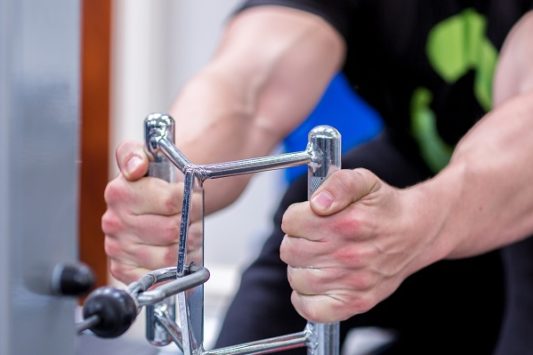High Intensity Interval Training (HIIT) is arguably the most popular new workout framework. Up until very recently, HIIT was used primarily by Olympic athletes and high level sports competitors to increase speed work in a variety of different sports. In the fitness industry today HIIT is one of the fastest growing training techniques, increasing endurance and strength.
WHAT IS HIIT?
A method of interval training in which you alternate between low/moderate intensity intervals and high intensity or ‘work’ intervals. HIIT can be applied to any type of exercise; running, cycling and strength exercises can all be performed in a HIIT style workout.
WHY IS HIIT SO EFFECTIVE?
HIIT raises your heart rate (HR) dramatically during the work intervals and due to short rest intervals, keeps it fairly high in the recovery period. The higher the intensity of the intervals the greater the demand for oxygen needed to recover. This creates an oxygen shortage in our body and increases our metabolism for up to 48 hours after working out. That’s right, HIIT is not only effective while you train, but for hours and even days post workout. The added benefits of a short workout means your body is less likely to shift into a ‘catabolic state’ – where your body begins breaking down muscle tissue for fuel, so you don’t lose all that hard work from lifting weights.
HOW TO PERFORM HIIT
There are two main types of techniques used in HIIT to measure high intensity (work time) and lower intensity intervals (recovery period). The ‘work to rest’ and ‘heart rate’ techniques can both be applied to determine intensity levels. As a general rule with interval training, the shorter the work interval, the longer the rest interval should be. This is because a shorter distance/time will be more intense and taxing on the muscles which in turn requires a greater recovery time. In terms of accessibility and ease of use, we’ll use running as our first exercise example.
WORK TO REST
This is a simple way of constructing your HIIT session, using a set work and rest time we can easily follow a timing system as an indicator as to when the work interval finishes and the recovery period begins. Here’s an example of a sprint style HIIT running workout:
HIIT Sprints using work to rest:
5 Min warm-up (easy jog)
Work Intervals: 8 x 20s sprints (80-95% of max effort)
Rest Intervals: 1 min recovery walk/jog (20-40% max effort)
5 Min warm-down (jog)
The above session uses a ratio of 1:3 between work and rest time.
HIIT HEART RATE
This is a more specific way of calculating your rest time and will allow you to compare previous past workouts to assess your improvement. You will need a HR monitor or a modern treadmill to keep an eye on your HR. Using heart rate as a measure of intensity allows you to select a percentage of your maximum heart rate (HR) for the work and recovery intervals. For example you may pick a rest interval of 60% of your max HR after a work interval at 90% of your max.
It is important to still use time as a measure for the work times, however the rest time may change depending on how quickly your heart rate comes back down to the desired resting HR.
Here’s another running workout example, working times at 90% max HR for 20s with a recovery interval where you allow your HR to reduce to 60% of max. The first thing to do is work out your max heart rate (220 – Your age) we’ll be using Dejan’s age (24) as an example, from there we can have a clear idea about work/rest heart rate percentages:
FORMULAS.
Max heart rate 220 – 24 = 196 bpm
Rest interval (60% max) 196 x 0.6 = 117/118 bpm
Work interval (90% max) 196 x 0.9 = 176 bpm
Now we can use a similar workout as the work to rest session but this time using the time it takes our heart rate to come back down to 60% as our rest time:
HIIT Sprints using heart rate:
5 min warm-up (easy jog)
Work intervals: 8 x 20s sprint at 90% max HR
Rest intervals: walk/jog until HR is at 60%
5 min warm-down (jog)
Try adding a HIIT style workout into your weekly routine, keeping your body guessing and ramping up your metabolism.
RECOVER STRONG.
HIIT is notoriously taxing on the body so it’s important to factor in correct supplementation and limit the frequency of HIIT sessions, which will help to reduce the chances of fatigue related injury. A product like Complete Recovery™ is a great choice for post-HIIT refueling. It contains over 15g protein to aid muscle repair, as well as leucine for increased protein synthesis; glutamine and HMB for increased recovery and muscle preservation, and carbs in the form of waxy maise starch to replenish diminished glycogen levels. Additions such as tart cherry extract help to counter exercise induced inflammation, and vitamin C and B6 contribute to better immune health and energy.
About The Authors
Dejan and Jonny are both fitness professionals stemming from a vast sporting background. Based in London they are the founders of ‘LetsTrain‘ – an online, forward-thinking, fitness and nutrition resource.








